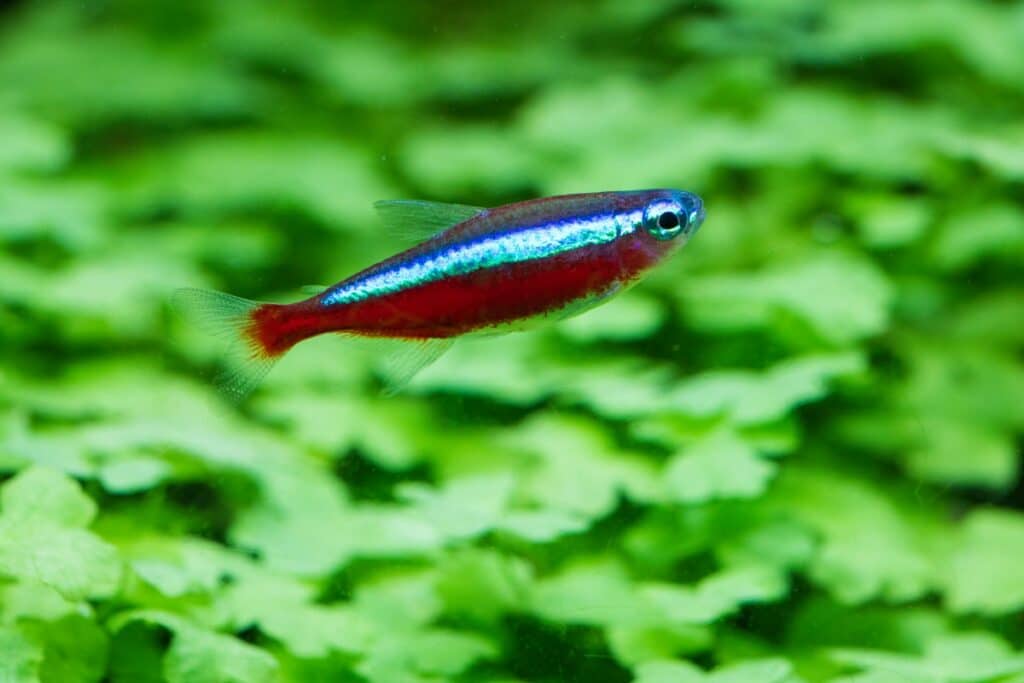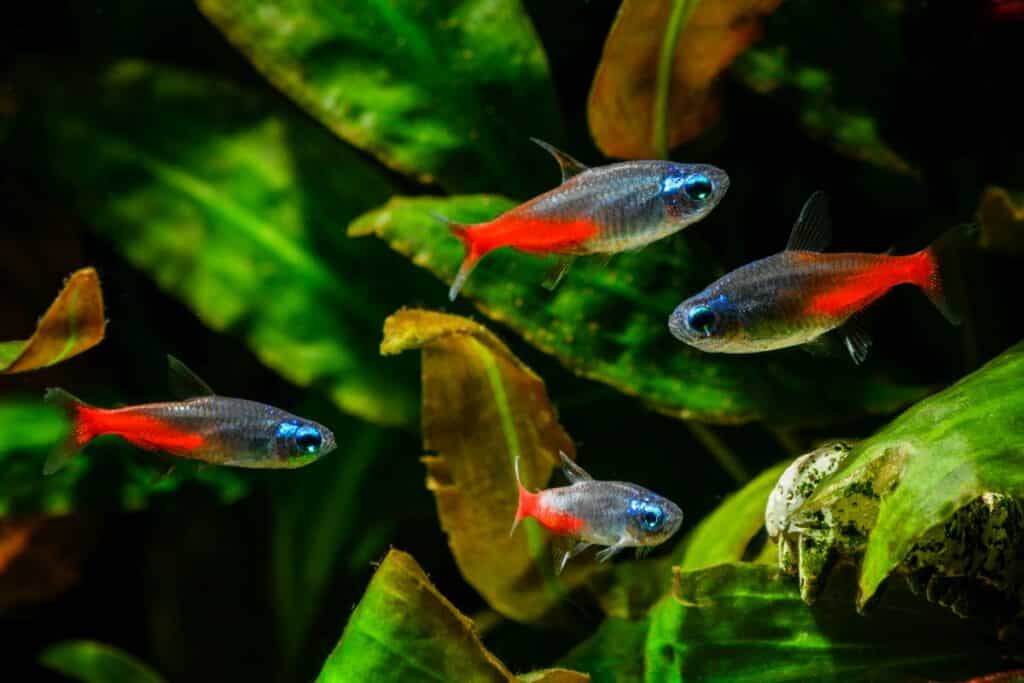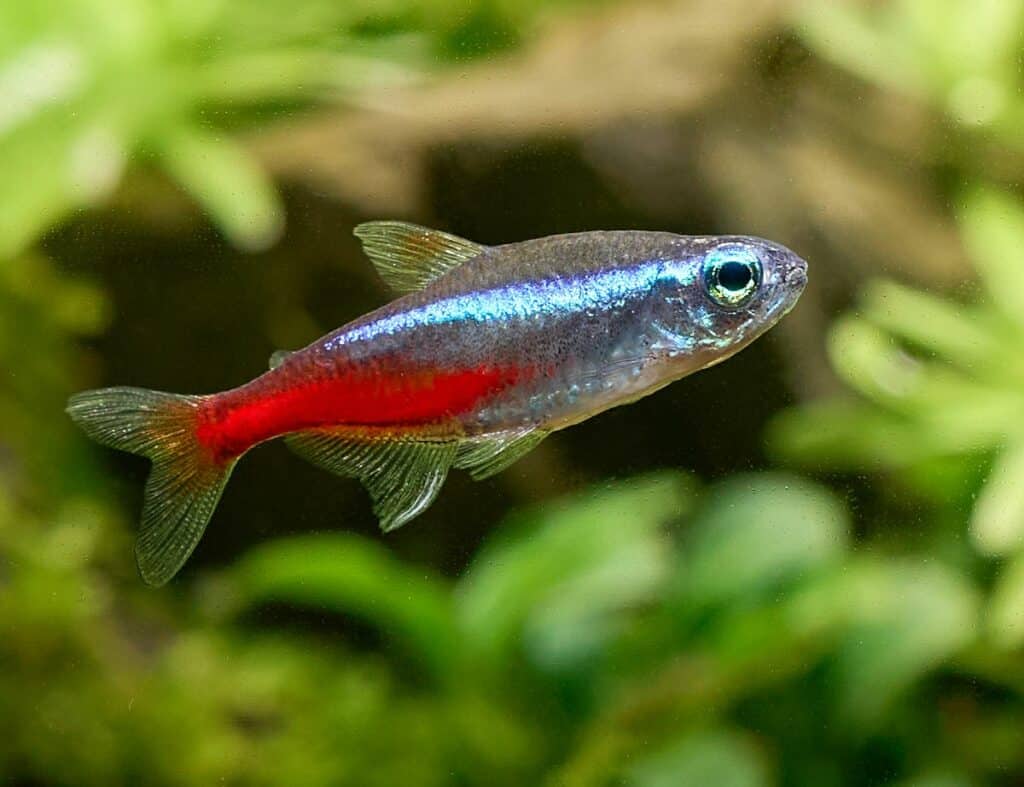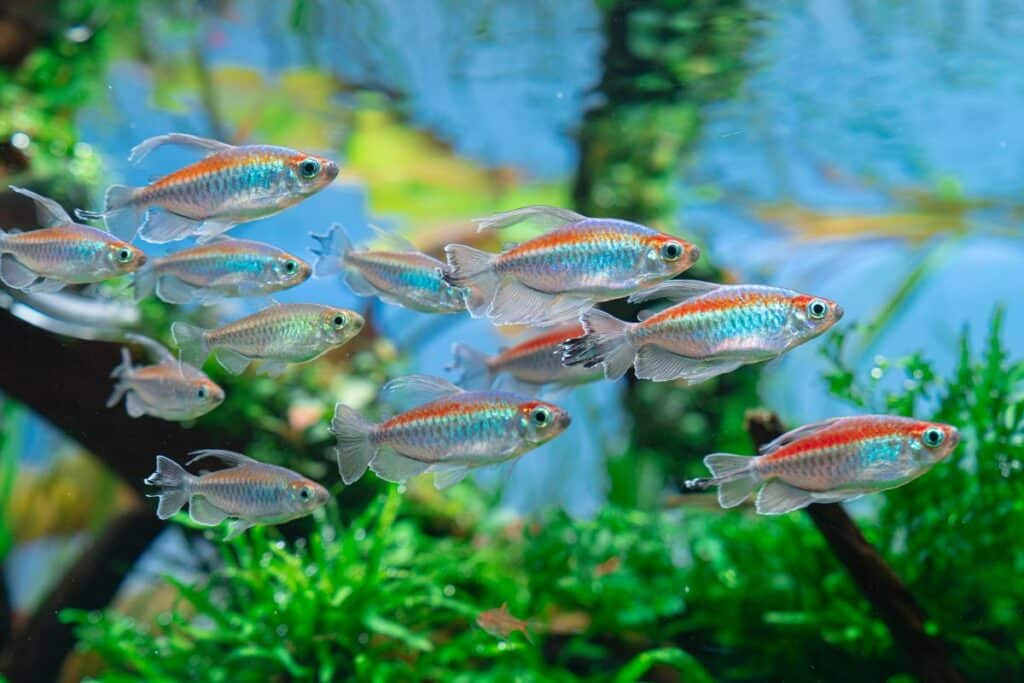the essentials in brief
Tetras are a large group of freshwater fish found primarily in South America and Africa. Read more here...
Tetras are generally easy to care for and peaceful fish that can be easily socialized with other species. You need a sufficiently large aquarium with clean and soft water that is changed regularly. Read more here...
There are more than 2000 known species of tetras, divided into different families and genera. Some of the most popular species of tetras for aquariums are neon tetras, glow-light tetras, blood tetras, cherry spotted tetras, and imperial tetras. Read more here...
Tetras are one of the most fascinating and species-rich fish groups in the world. They delight aquarists with their bright colors, lively behavior and adaptability to different habitats. In this blog post you will find out everything you need to know about tetras: from their origin and systematics, to keeping and caring for them, to reproduction and breeding.
Descent and systematics of the tetras

Tetras belong to the order of Characiformes (Characiformes), With the over 2000 species is one of the most species-rich orders of bony fish. Most tetras live in South America, where they inhabit almost all types of water: from large rivers such as the Amazon or the Orinoco to small streams and lakes to flood plains and swamps. Only about 10% of tetra species are found in Africa, where they live primarily in the Congo, Nile and Niger river systems.
With more than 1100 species, the family of real tetras (Characidae) is the largest family of tetras and the fourth most species-rich family of bony fish. The real tetras are characterized by an adipose fin spine, which is located between the dorsal fin and the adipose fin. This family includes many well-known aquarium fish such as neon tetras, glow-light tetras or blood tetras.
In addition to the true tetras, there are other tetra families that are important for aquaristics. These include, for example, the Sawfish (Serrasalmidae), to them also include the notorious piranhas, the headstanders (Anostomidae), which are characterized by their oblique swimming position, the oblique swimmers (Thayeriidae), which have a conspicuous black longitudinal band, or the Hatchet fish (Gasteropelecidae), which are reminiscent of axes due to their greatly enlarged pectoral fin.
Keeping and caring for tetras in the aquarium

Tetras are generally easygoing and peaceful fish that are well suited to a community aquarium. However, they should always be kept in a sufficient swarm size, otherwise they can become shy and stressed. Depending on the species, at least six to ten animals should be kept together.
The aquarium for tetras should at least 60 cm edge length and be equipped with good filtration, adequate ventilation and moderate flow. The water should be clean and soft, as many tetras come from soft water areas. The pH should be between 6 and 7,5, the total hardness between 2 and 15 °dH and the temperature between 22 and 28 °C.
Note: The ability of tetras to regenerate is not a free pass for poor keeping conditions or lack of care. You should always make sure your tetras are healthy and stress-free.
The setup of the aquarium should mimic the natural habitat of tetras. This includes one dense planting with fine-leaved plants such as java fern, tomentosum or moss balls, which offer the tetras protection and hiding places, as well as a dark substrate made of sand or gravel, which is structured with roots, stones or caves. Dim lighting with a daylight cycle of around 12 hours promotes the well-being of the tetras.
The diet of tetras is relatively simple, as they omnivore are. However, they should not only be fed flake food, but also live or frozen food such as mosquito larvae, Artemia or Tubifex, which provide the tetras with important nutrients. In addition, plant-based food such as algae, spinach or cucumbers should be fed regularly, which promotes digestion and prevents deficiency symptoms.
Peculiarities and curiosities of tetras
- Tetras have a lateral line organ with which they can perceive pressure fluctuations in the water. This organ consists of a series of pores located on the sides of the fish and connected to nerves. With the help of the lateral line organ, tetras can orientate themselves in a swarm, locate prey or recognize enemies.
- Tetras have a special adaptation to low-oxygen water: You can breathe atmospheric air. To do this, they have a special organ called a labyrinth. The labyrinth consists of an intricate system of bony plates with blood vessels running through them. When the tetras come to the water's surface, they take in air with their mouths and direct it into the labyrinth, where the oxygen passes into the blood.
Tip: Don't overfeed your tetras and remove leftover food from the tank to maintain water quality.
- Tetras have a high ability to regenerate: They can regrow lost or damaged body parts such as fins, scales, or even eyes. This is particularly useful for tetras that live in waters where they are frequently attacked or injured by predators. Regeneration occurs through the activation of stem cells, which are located in the affected areas and differentiate into the required cell types.
Propagation and breeding of tetras in the aquarium

Tetras are usually easy to reproduce and breed if you follow a few basic rules. Most tetras are free spawners, meaning they lay their eggs freely in the water without fertilizing or tending them. However, some species are foam nest builders, which a Build a nest out of air bubbleswhere they lay and guard their eggs.
A separate rearing tank with a volume of approx. 20 to 40 liters and equipped with a sponge filter should be set up for rearing tetras. The water should be soft and acidic, with a pH of around 5 to 6 and a total hardness of less than 5°dH. Depending on the species, the temperature should be between 24 and 30 °C.
The breeding tank should be sparsely planted, with a layer of peat moss or foliage on the bottom as spawning substrate. It should also contain some finely felted plants such as java moss or hornwort, which offer protection to the tetras. Lighting should be dimmed and only turned on a few hours a day.
A healthy, sexually mature pair or small group of tetras should be selected for breeding and placed in the breeding tank. The tetras should be fed well beforehand to increase their willingness to spawn. Reproduction can be stimulated by changing the water with cooler water.
Tetras usually spawn in the morning by attaching their eggs to the spawning substrate or plants. The eggs are very small and transparent and can number up to several hundred per spawn. After spawning, the parents should be removed from the breeding tank, otherwise they may eat their own eggs.
Depending on the species, they hatch Young fish after one to three days. The young fish are initially very small and feed on their yolk sac. After about a week, they can be fed fine dust food or infusoria. The fry should be regularly sorted to separate the stronger from the weaker.
Tetras are popular aquarium fish
Tetras are one of the most popular groups of fish in the aquarium. They offer an enormous variety of shapes, colors and behaviors that will delight any aquarist. Tetras are generally easy to care for and well tolerated if given the right conditions. Tetras are also easy to propagate and breed if you follow a few tips.



